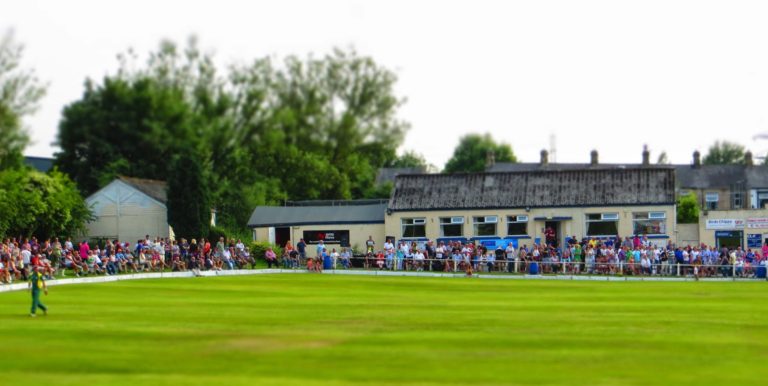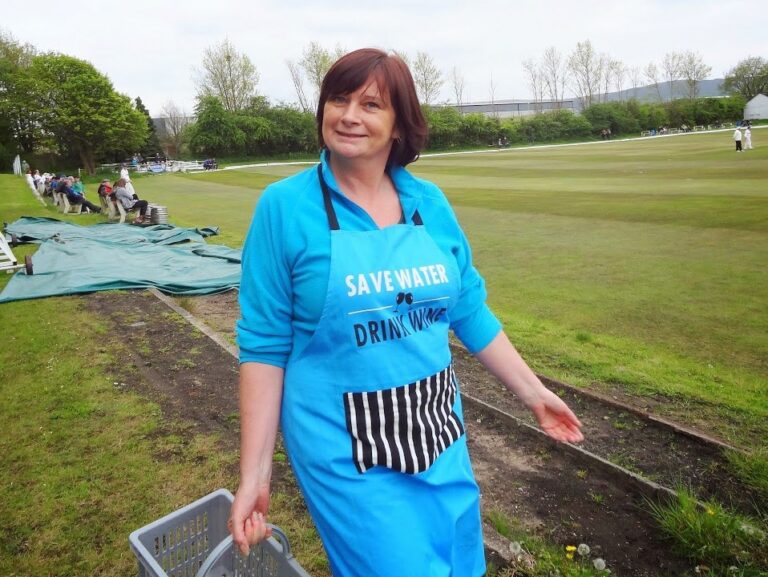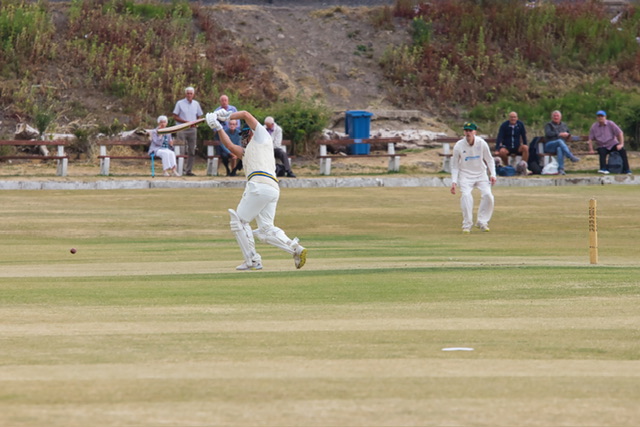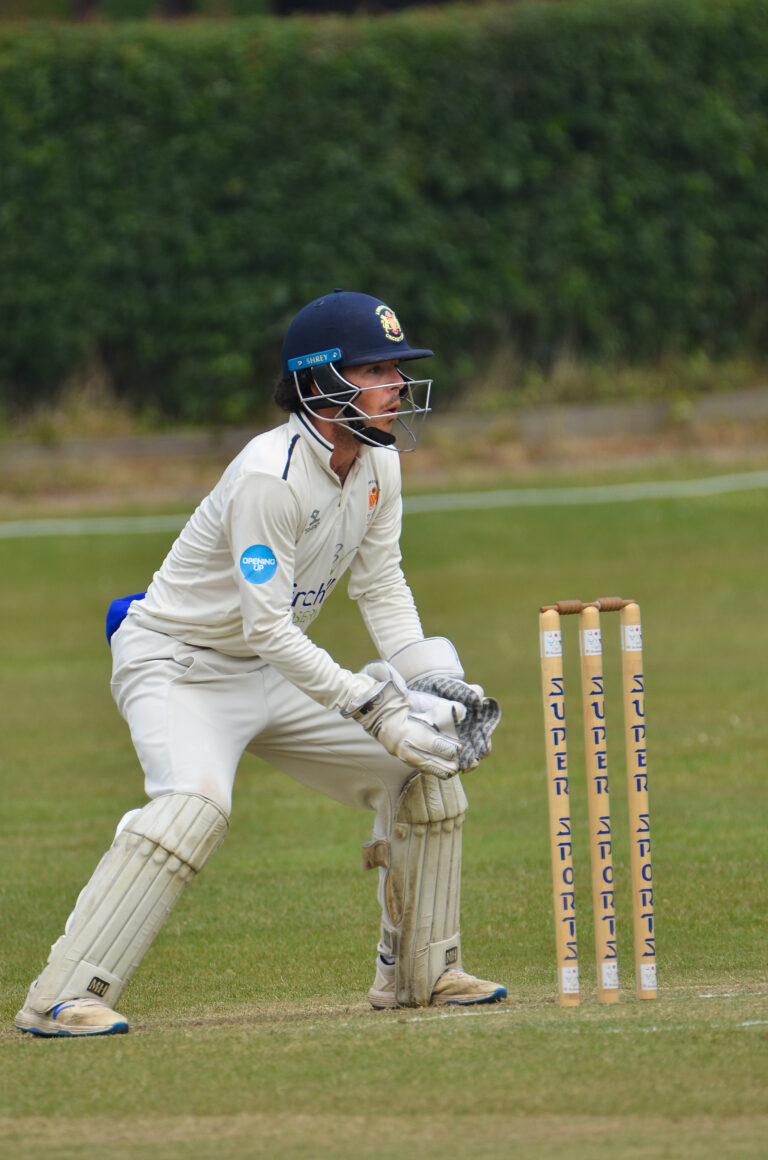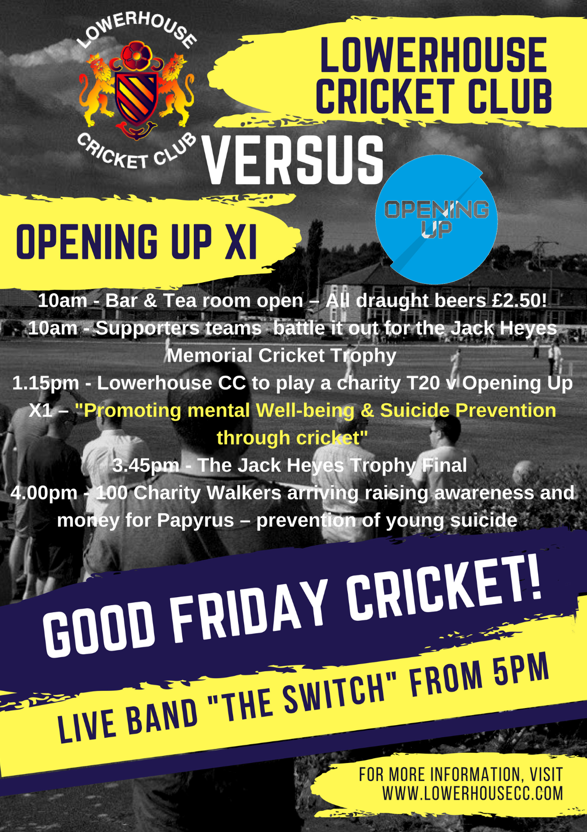1899: In Search of an Identification
By Richard Miller

Hanging in the pavilion at Doo’Cot Park in Perth, I spotted an old photograph of a cricket team, with no details at all on the mount to identify the club or the year. I took a photograph of it with my phone and put it in the folder of images to be researched at another time.
Scrolling through the images in the Unidentified folder recently, I recognised a couple of people in the photograph from Perth and decided to do some more digging to see if would be possible to pin down the team and rough year. There was a very young-looking Joe Anderson, one of Scotland’s best cricketers from before the 1914-18 War, along with another two layers whose faces I recognised, John Mailer and A K Bell. That told me it was a Perthshire team, probably pre-1900 as I knew Anderson was born in 1878 and he looked like a teenager in the photograph. I was lucky enough to have photographs of Perthshire from 1899 and 1901 and Joe looked younger than in either of those two images. Those photographs also contained three more of the players in the unidentified image. A bit of research in an old scrapbook of Perthshire press reports established that Anderson first played for the County team in 1897 so the chances were that the photograph was from that year or 1898.
To try to pin down the year and to identify the other people in the photograph I went back to the scrapbook, searching for matches where all of the known players were listed as it was more than likely that the photograph had been taken at one of the major matches of the club, probably the annual two-day match with local rivals Forfarshire. Sure enough, I found the scorecard for the 1897 match contained all of the identified players and another couple whose photographs I already had and could now identify.
There was one person in the image who didn’t appear in any of the other Perthshire photographs I had and from the scorecard I reckoned it must be the professional, who was simply listed as Shutt in all the scorecards. I could have left it at that but wanted to see if I could identify Shutt properly and give him a full name when I caption the photograph for use in a publication. A newspaper search for Shutt in the local press produced an obituary from 1922 of an H Shutt, noted as the ex-Perthshire professional so I followed that and found a Herbert Shutt, from Ardwick, who was professional at Whitehaven either side of the Great War and who played for Hampshire. His biography didn’t mention Perthshire but that wasn’t very surprising so I jotted down his details and then did a search for a photograph to see if it was the same man. There was an obituary in the Daily Mirror in 1922 which had a photo of Herbert. It was an action shot and not a great image but it really didn’t look like the man in my photograph so I thought I’d better do some more digging to make sure I’d got the right man.

Another newspaper search produced an 1897 profile of Perthshire’s new professional, Tom Shutt, from Burnley. With a full name to search for I was able to find several references to Tom Shutt in the local Scottish newspapers, following his career in the Lancashire Leagues right up to the outbreak of war. He had obviously left a good impression in the Perth and Dundee area and his name was recalled almost every time there was a significant article about Perthshire’s history in the press. I Googled Tom and almost the first site that came up was Lowerhousecc.com. There I found a wonderful resource, full of stats and a club which obviously had done a lot of research on its history. There was a section on photographs which indicated that the club archive had 35,000 images so I sent an email to Adam Hope asking if he had a photograph of Tom which I could compare against the image I had from 1897. Requests like this to other clubs have generally met with a complete silence but within a few minutes I had a reply from Adam with a link to archive material online and a promise that Anne, the club historian, would see if there was anything in the records which hadn’t been uploaded as yet. More emails followed with further details and a photograph of Tom from around 1910 which, although quite a bit older, confirmed that the man in my 1897 image was indeed Tom Shutt.
I now have a fully captioned photograph of the Perthshire team which played against Forfarshire in July 1897 in front of a crowd of over 10,000 on the second day, the Saturday. Forfarshire batted first and scored 306, largely due to their captain, W R Sharp’s 150. Tom didn’t tale a wicket in the innings but fared better with the bat, scoring 48 out of Perthshire’s 184 and was 26 not out in the follow-on when stumps were drawn with the score 86 for 4. The worst of the draw, perhaps but at least it wasn’t a defeat. The collection for his benefit at that match amounted to £61, worth around £30,000 in today’s values.
In the 1898 match at Perth, which attracted crowds of 5,000 on the Friday and 10,000 on the Saturday,Tom scored 21 in each innings, top score in the first and third-top in the second. He took 4-21 and 6-33 as Perthshire beat Forfarshire for the first time in four years. His collection at that match was £65, adding to his weekly wage of around £4, showing why taking a professional appointment at a club like Perthshire was often much more attractive than life as an average county pro in England who might earn around £120 for the season but had to pay for his kit plus travel and accommodation for away fixtures while playing six days a week.
Despite Tom’s popularity in Perth, the club decided to look elsewhere for the 1899 season and Tom was replaced by another player who was to appear for Lowerhouse, Ernest Vost. It wasn’t a great choice as Vost fell out with the club in mid-season, resigned at the start of July and left them facing their old foes, Forfarshire, in their one-day away match with an all-amateur side where they chased leather to the tune of 264 for 8 and then were bowled out for 88!

His 164 in 1897, against Watsonians, was at the time the highest score recorded at North Inch, Perth and was the only century for the club during the season. His other century came in 1898 against Glenalmond and was again the only three-figure score of the season for the club.


